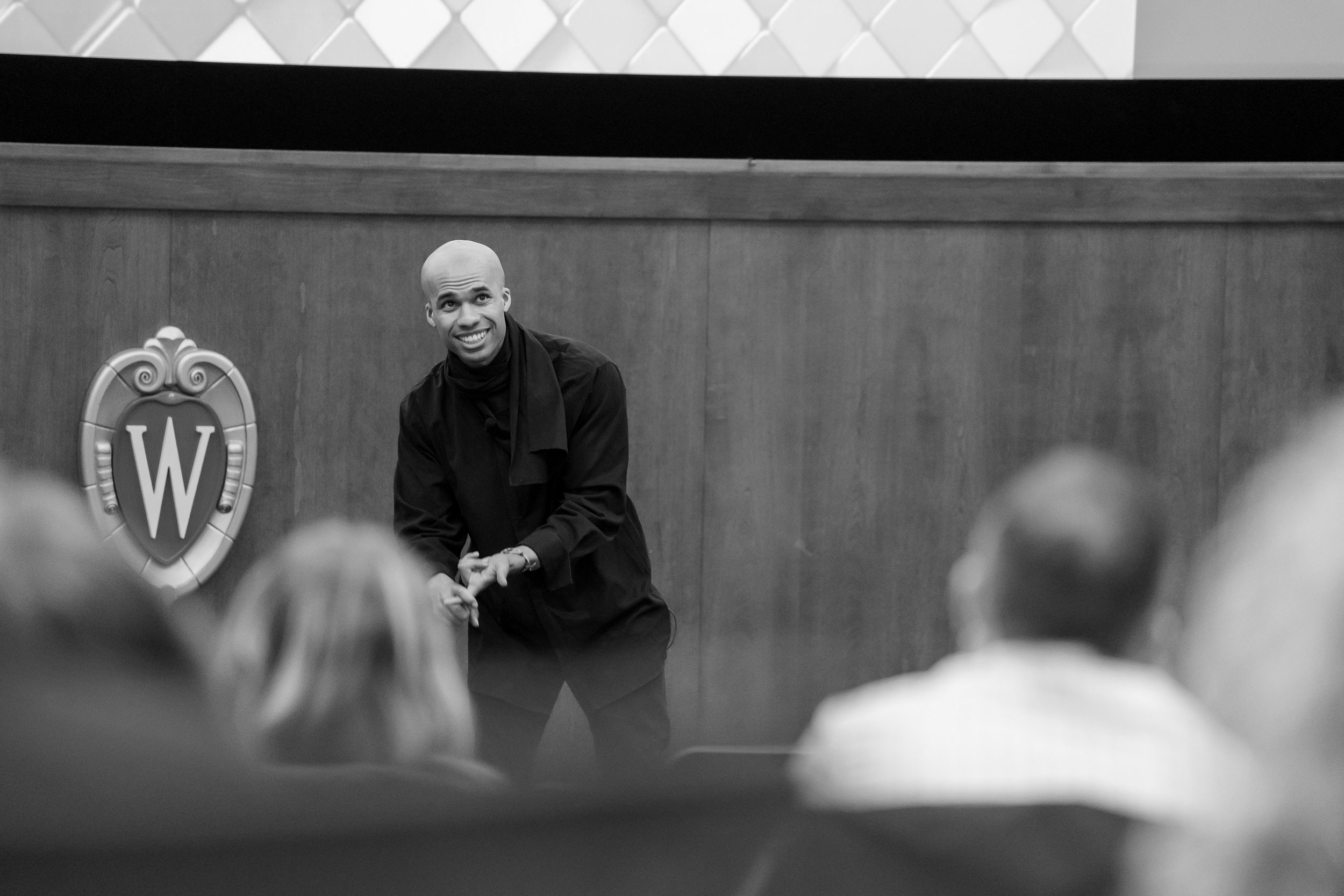
Do DIFFERENT tHINGS diFFERENTLY
Creative Principles for Breakthrough Ideas

Poets are innovators.
For thousands of years, poets have challenged the creative status quo to redefine what words and art can do.
In my work, I’ve gone beyond the traditional page and stage, using the lessons of innovation to reimagine poetry as something interactive, immersive, and experiential. Because at its heart, poetry asks us to step outside the familiar, play with possibility, and discover new ways to connect with and move people.
Businesses face the same mandate. Markets change, expectations rise, and leaders are challenged to innovate faster than ever, all while teams face the same barriers that plague poetic creativity, like perfectionism, overthinking, and fear of failure.
Over time, I discovered that poets rely on a predictable set of tools to sidestep those blocks and generate breakthrough ideas. Those tools form the foundation of the Do Different Things Differently™ principles: a collection of creative strategies leaders can apply to unlock new thinking and reimagine what’s possible inside their own organizations. These principles form the basis of my keynote programs.
When we think like poets, we don’t just solve problems—we transform them into opportunities for discovery, connection, and meaningful change.
Write by Erasing
One of the first challenges a poet faces is learning how to distinguish between the language and ideas that push their craft forward, and those that they return to simply because they feel familiar and safe; when the poet stops making this distinction, they cease to be the person dictating the evolution of their craft. As professionals, we often presume that our established practices, products and norms are essential; but how might erasing the right status quo solutions make room for more impactful ideas?
Give Reality the Benefit of the Doubt
In order to conjure colorful metaphors and rich imagery, the poet needs a healthy appetite for the absurd. They must learn to take seemingly unrelated concepts and find connections that paint them in a new light. As leaders and innovators, new grand aspirations are often met with skepticism and uncertainty - often within our industries, and sometimes even within ourselves. What excellence might we birth by suspending disbelief in outlandish aspirations and finding artful ways to bring them to life?
Aim for the Trash Can
The poet knows that their best work is not often planned, but discovered by sifting through enough lackluster ideas to stumble upon the line or idea with the potential of being crafted into creative insight. This exploration requires that the poet not only tolerates but actively seeks their "bad" ideas in order to simply keep the pen moving. As professionals, our high-intensity work environments often stop us from nurturing ideas that start off as weak. What excellence might we discover by giving our weakest ideas room to breathe and grow?
Think Inside the Box
The poet is liable to experiencing writer's block when faced with a blank page and searching for the perfect word. One way the poet overcomes this is by embracing constraints on their style, time, or topic. Rather than constricting them, these constraints can enable them to write more decisively. Innovators are constantly negotiating constraints on their budget, time, and other resources. How might we learn to leverage these constraints for greater velocity so we can produce the work that amounts to real progress?
Find Wisdom in the Weakness
The poet is inherently curious about the unexamined, flawed, and underdeveloped parts of their craft and lived experience. They recognize that exploring these places can often beget far more artistic and personal growth than leaning into the styles they're most competent at and the topics they know best. In the professional world, we are taught to lean into our strengths - both in terms of our abilities as a leader, and in terms of our products & services. What forms of growth await us if we choose to acknowledge and understand our weaknesses?







